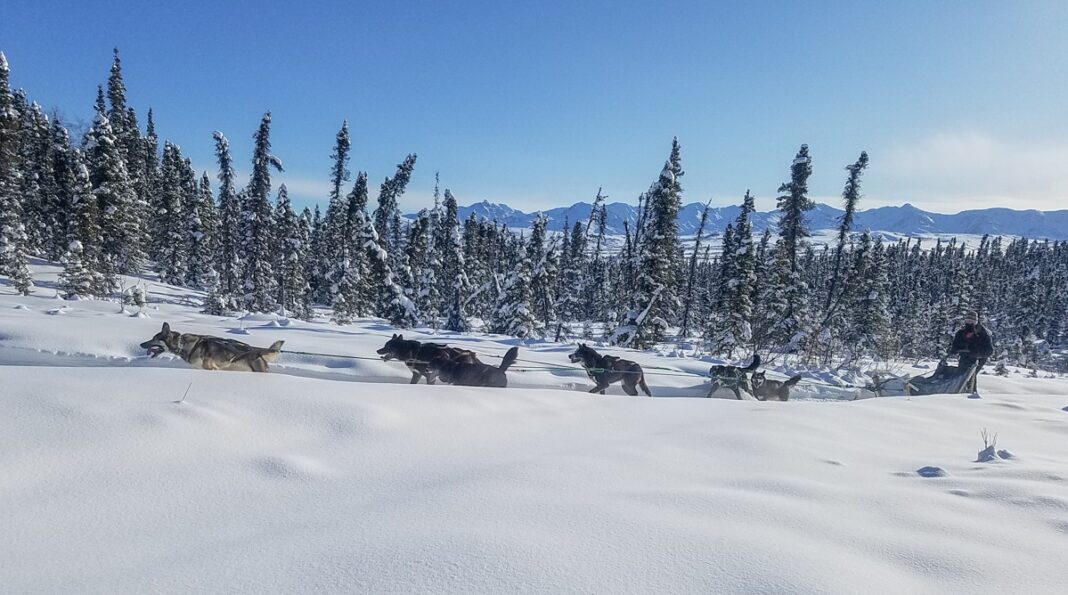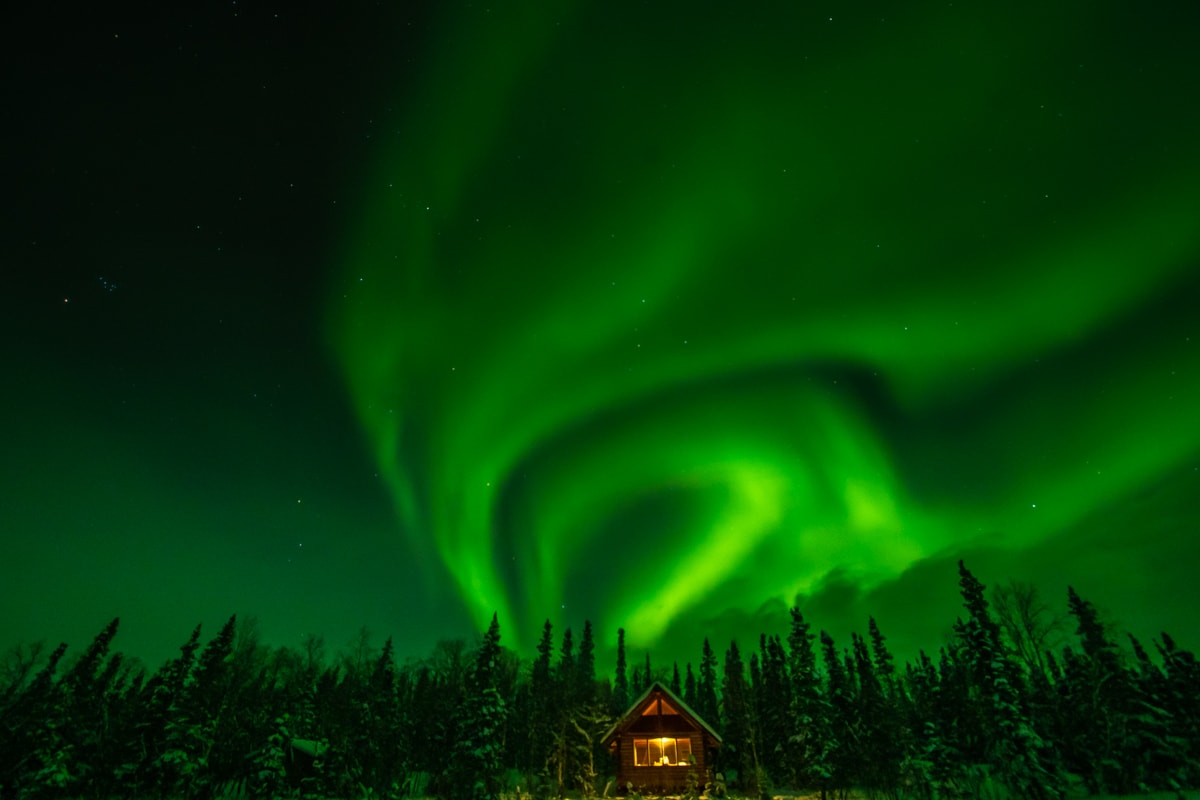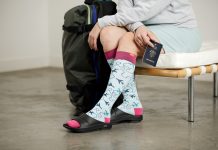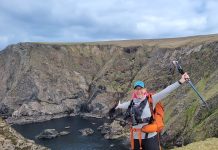The first thing Courtney said after introducing herself was, “we don’t adopt out our dogs”. At the moment, I thought it was an odd thing to lead with as we prepared to go on our first Alaska dog sledding expedition. I love Alaska sled dogs, but I had never considered adopting one…but then again, I had never met Courtney and Brian’s dogs from Moon Dog Kennels.
As we stepped into the kennel at Earthsong Lodge on the outskirts of Denali National Park, the excitement was building, like a cork about to burst out of champagne. I was excited; however, it was the sled dogs that were about to burst! As they jumped up and down, there was a symphony of howls, barks and even whimpers. The dogs knew that new people in the kennel meant they got to run; and for an Alaska sled dog – that’s the best thing in the whole wide world.
Dog Sledding in Alaska
One of the main reasons I wanted to come back to Alaska in the winter is to do more dog sledding. Every time I mush, I learn a bit more, and I fall in love with it more. This trip to Alaska I was finally ready to take on a 2 day expedition mushing my own team!
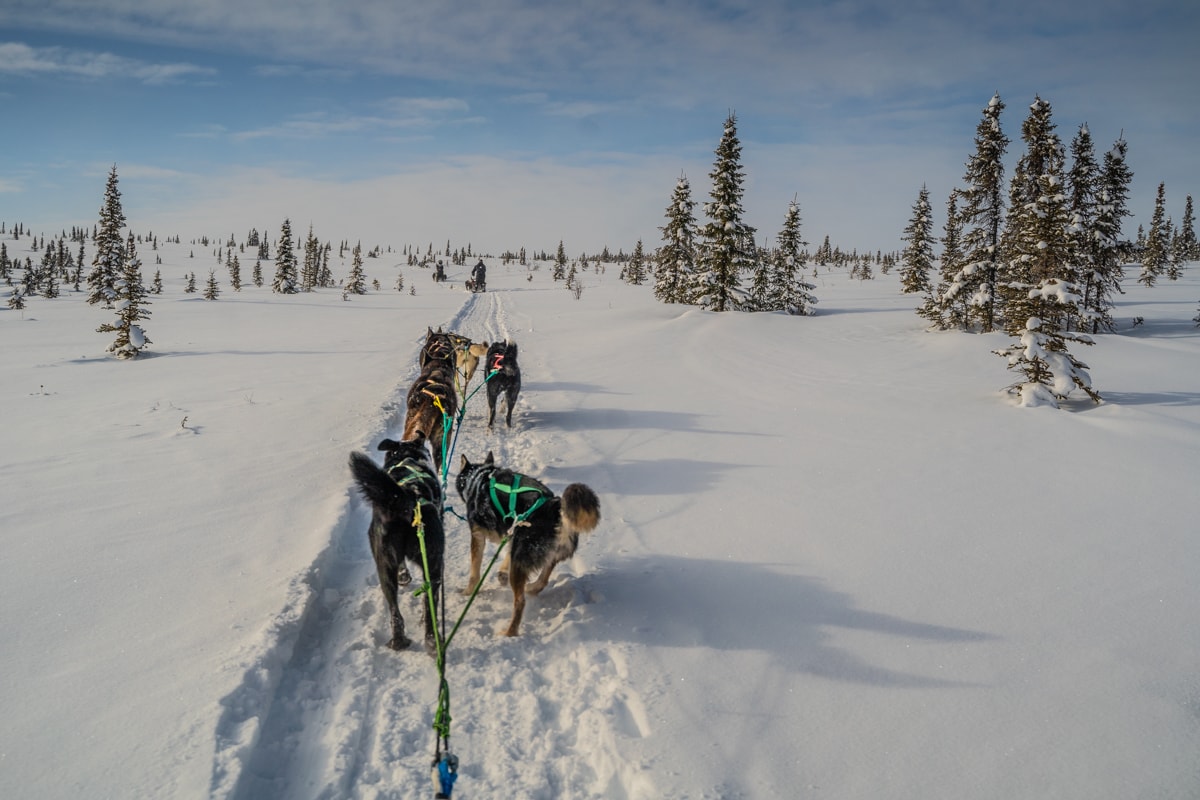
Dog mushing is considered Alaska’s state sport. Originating in a time when there weren’t snow mobiles and sled dogs were the best way to get and haul goods around a vast and unforgiving landscape. Now it has turned into recreation, and it’s an aspiration for each Alaska visitor to go dog sledding. Most people start with riding in a sled watching the snow covered trees whiz by. But I must warn you – riding in the sled is the gateway drug, next, you’ll want to try mushing your own team.
However, there’s one problem with mushing your own team,
It ruins you, once you mush your own team, you never want to go back to simply riding in a sled.
Mushing School
I attended mushing school near Fairbanks with the Last Frontier Co-op on my trip there in 2018 where I trained with a 3 dog team for half a day. I learned that controlling a team and sled by yourself is not as easy as it looks. This is a full body sport, there is no power steering, and the dogs will run forever if you let them – whether you are on the sled or if you fell off! This is why I always remember the most important part of mushing – don’t let go!

Mushing school also taught me that I was hooked and wanted to go further and faster. Now was my opportunity to put that schooling to work in one of the best places in Alaska – Denali National Park.
Can You Dog Sled in Denali National Park?
Earthsong Lodge & Denali Dogsled Expeditions has the one and only permit to run dogs in the park. The park also has sled dogs, however they are used for only hauling freight and not people. They are also used for educational purposes.
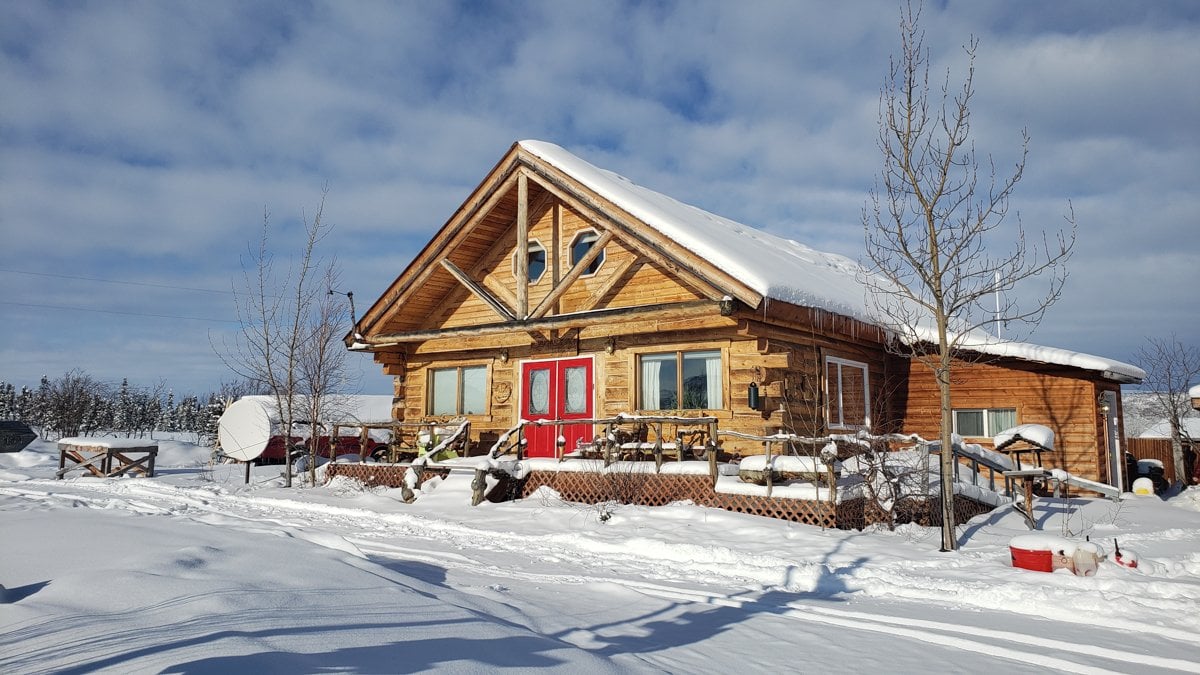
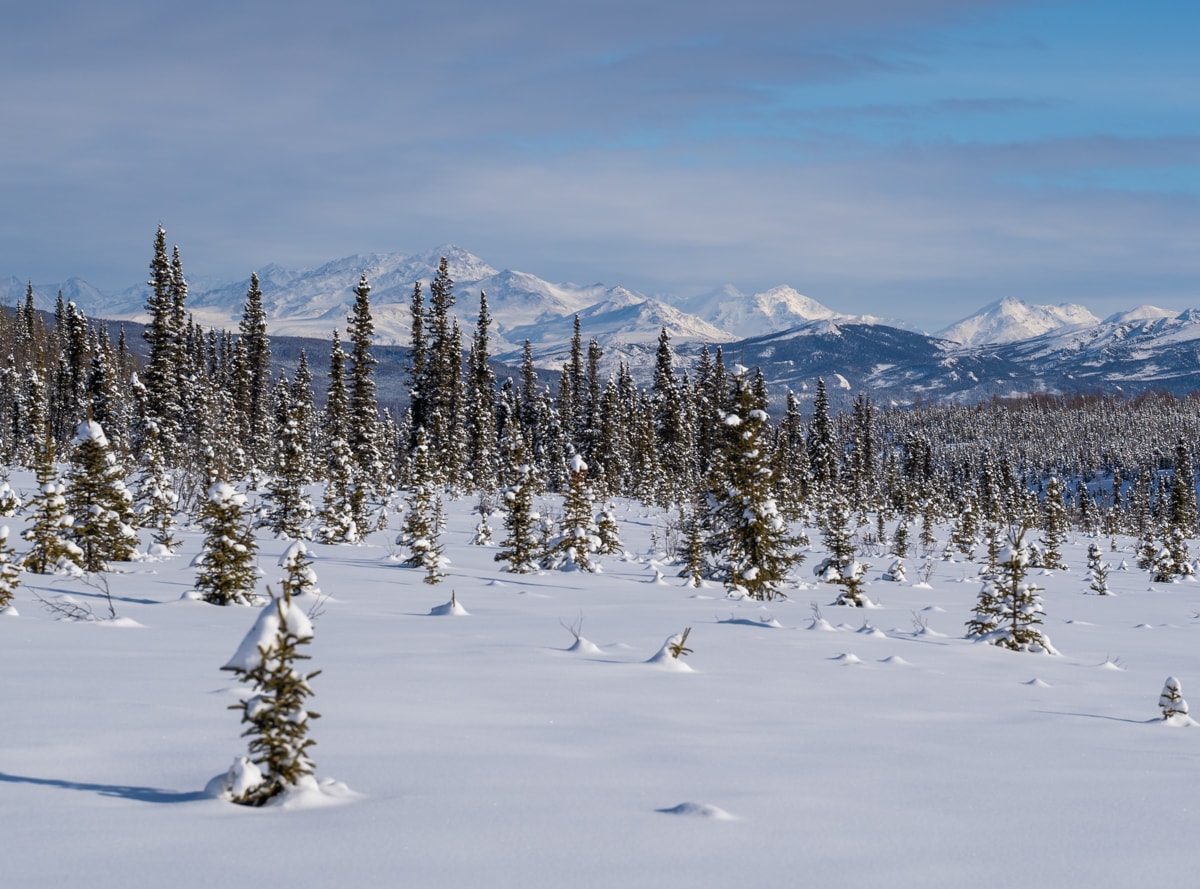
If you want to go dog sledding in Denali National Park, you will need to contact Earthsong Lodge! They operate overnight trips in the heart of Denali Park Wilderness, Wonder Lake, and the park road corridor. They offer 1 to 10 night expeditions, as well as a 1 to 4 hour day trips. Primarily they have guests mush their own teams, which also makes them unique. They do this by having guests run the sled while the guides sit in the sled and give assistance! Their overnight trips do typically require a training day before heading into the backcountry.
For another unique offering they also offer hut to hut ski expeditions and support those with dog sleds.
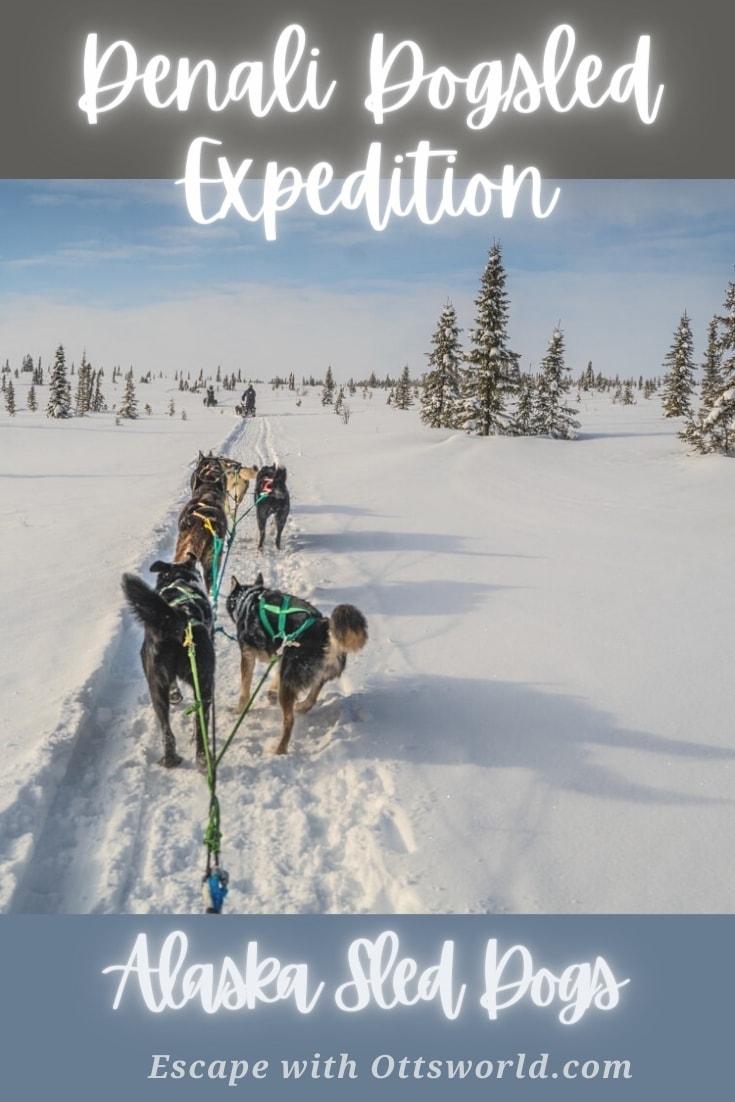
What Makes these Alaska Sled Dogs Different
The real answer here is Courtney and Brian (but I’ll get into more of that below)
Alaska sled dogs come in a couple of ‘types’; freight style dogs vs race style dogs. Earthsong runs primarily freight style Alaskan huskies and they are burly, dense, dogs. They can haul a lot of weight and are bred for good coats and paws.
Racing dogs are bred for appetite and speed – think Iditarod. They need to run fast – but don’t need them to haul 450 pounds in a sled.
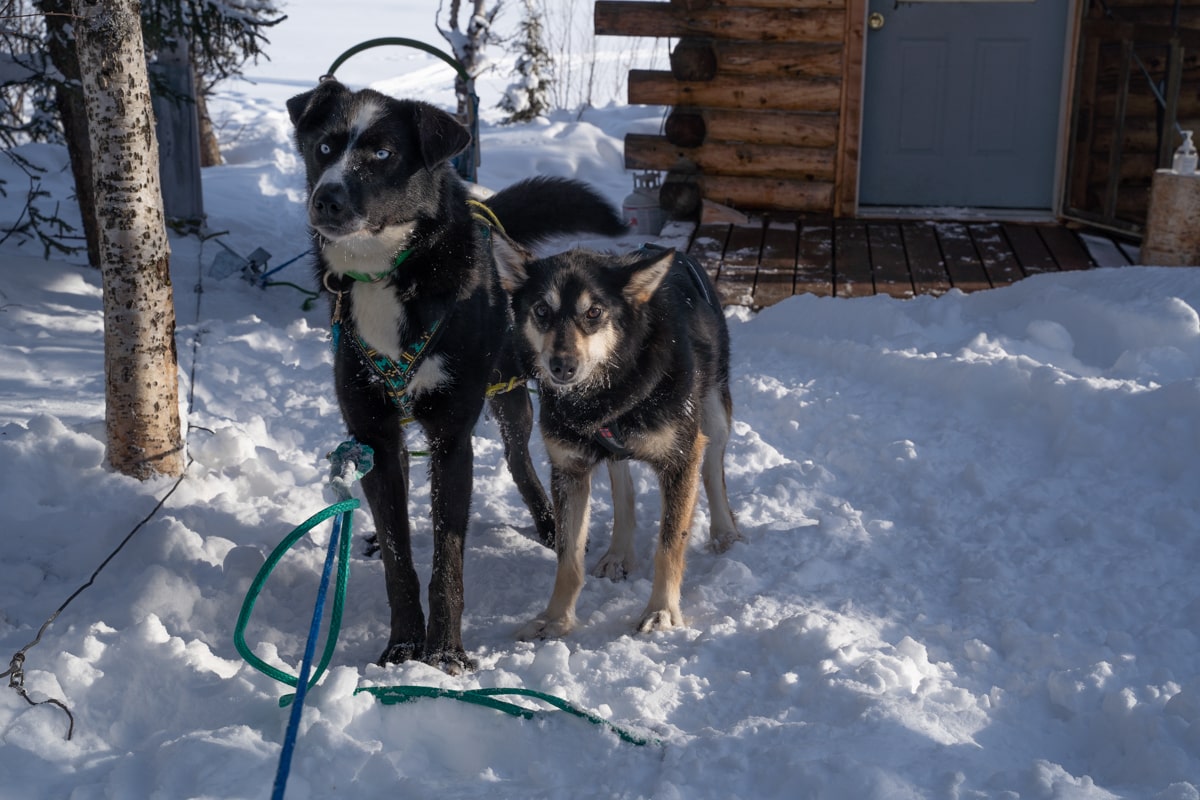
They two types of dogs are total opposites. The Earthsong dogs are breeding freight style dogs since these dogs are needed to handle the cold better as well as pull more weight.
Courtney and Brian of Moon Dog Kennel
“Educating people about the use of traditional sled dogs and their role in the history of Alaska is something that is very important to us.”
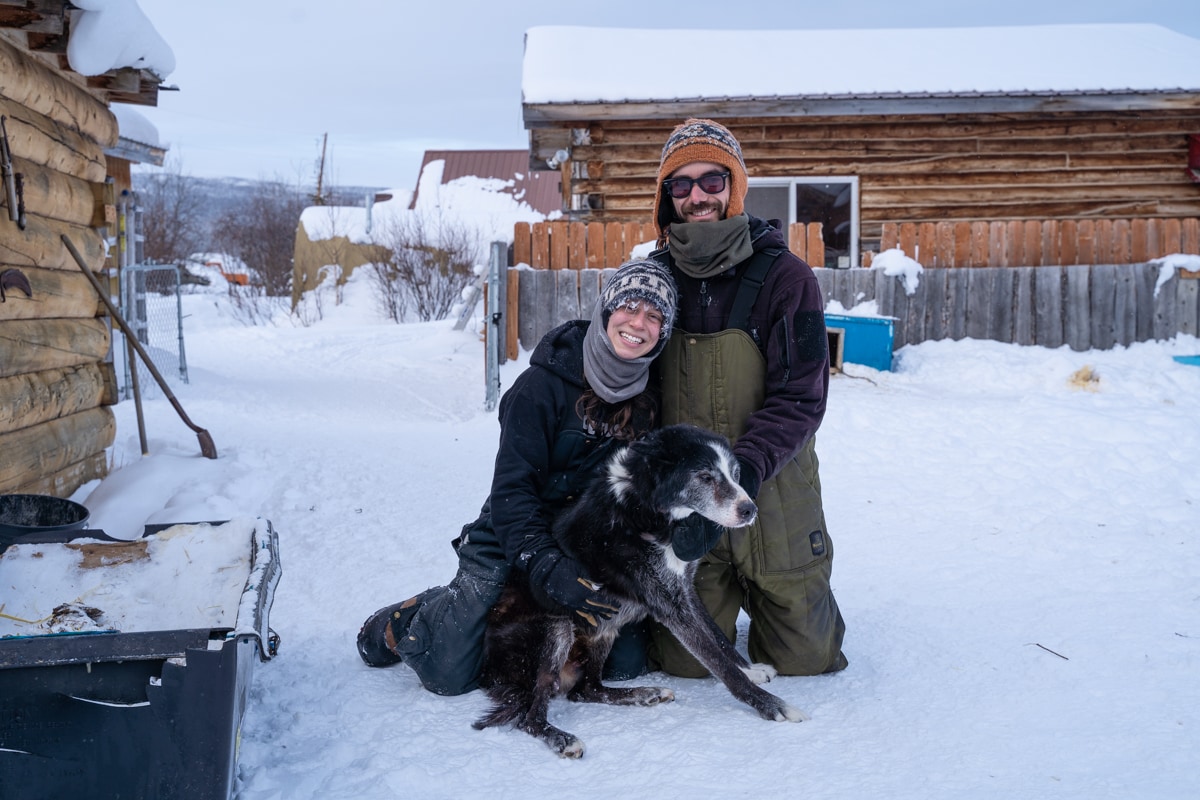
Meet Courtney and Brian who run the dog sledding operation for Earthsong Lodge. They are the heart of this operation and have a love of dogs like I’ve never experienced before. Courtney described their dedication, “We don’t have children so we make a commitment to every single dog that they are with them until the end.” And that explains why Courtney started our introduction about how they don’t adopt out the dogs!
Even though they are breeding for freight style dogs, Courtney and Brian currently have a mix of 30 racing and freight dogs including the ‘oldies’ and puppies. They have a handful of retired Alaska sled dogs that don’t run any longer but still live out their life at the kennel and primarily stay inside with Courtney and Brian.
We even met their oldest dog who was 18! Yes…18.
Let’s Discuss Chaining Sled Dogs
I know, I know – people come to kennels in Alaska and see the dogs chained up and it concerns them. Courtney said that this is probably the most frequently asked question she gets. I asked how she handles the questions/concerns. I know they love these dogs like their children, so I know they wouldn’t do anything that was bad for them.
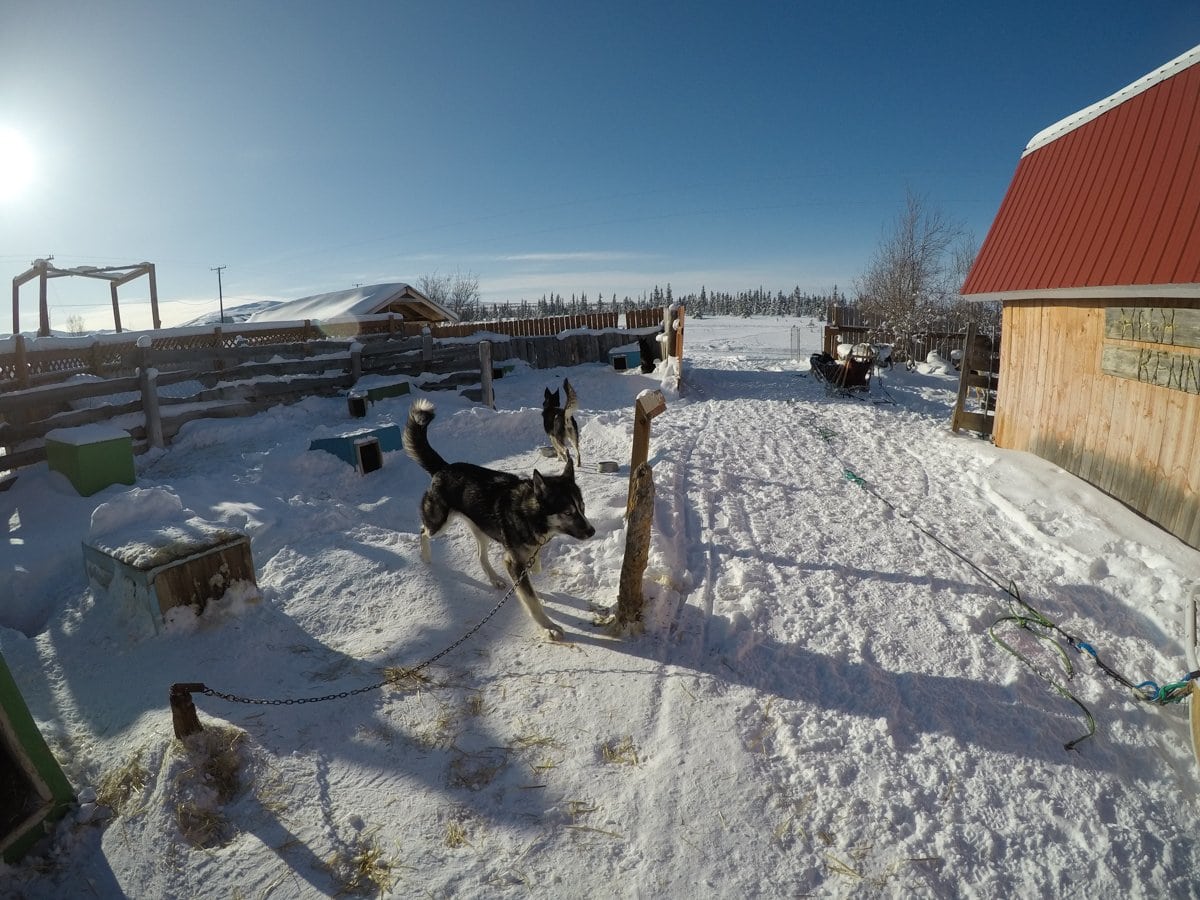
She explained that their dogs at Moon Dog Kennel spend most of our time off chain – at lease as much as possible. If you look at a modern pet dog – people go to work and they kennel a dog or they put their dog in a room or a run outside. “It’s the same thing with us chaining dogs. It’s not like they are spending their whole life chained up not doing anything. We spend 4+ hours out on trail every day – that’s more than most pets spend outdoors in a week! However, when I’m not home, we still have to have a way for them to not breed or get in fights – which is dangerous for the dogs.”
By having a little wooden ‘house’ and chain they have a space they know is theirs. Everything in their life is shared, but they have this one spot that is just theirs – it’s their home. At the end of the day they go back to their spot, they know that it’s their space and they are happy there, they need it and want it.
In my opinion it’s very different having one pet dog vs. 30. There are special considerations to have to take into account when you have 30 dogs. People with 1 or 2 pets don’t have to deal with fights or breeding. I understand Courtney’s concerns for their safety.
In addition, Courtney explained, “We are always trying to find better ways or do things differently or integrate new ideas. But this is the easiest and safest way for all of the dogs. Plus, they have buddies on either side of them. They aren’t being chained up alone in a back yard. They can reach each other and play.”
Sled Dog Training
I think one of the most astonishing things that I hadn’t seen at other sled dog kennels before is the level of training that is done by Courtney and Brian. Not running training…but sit, shake, and potty training!
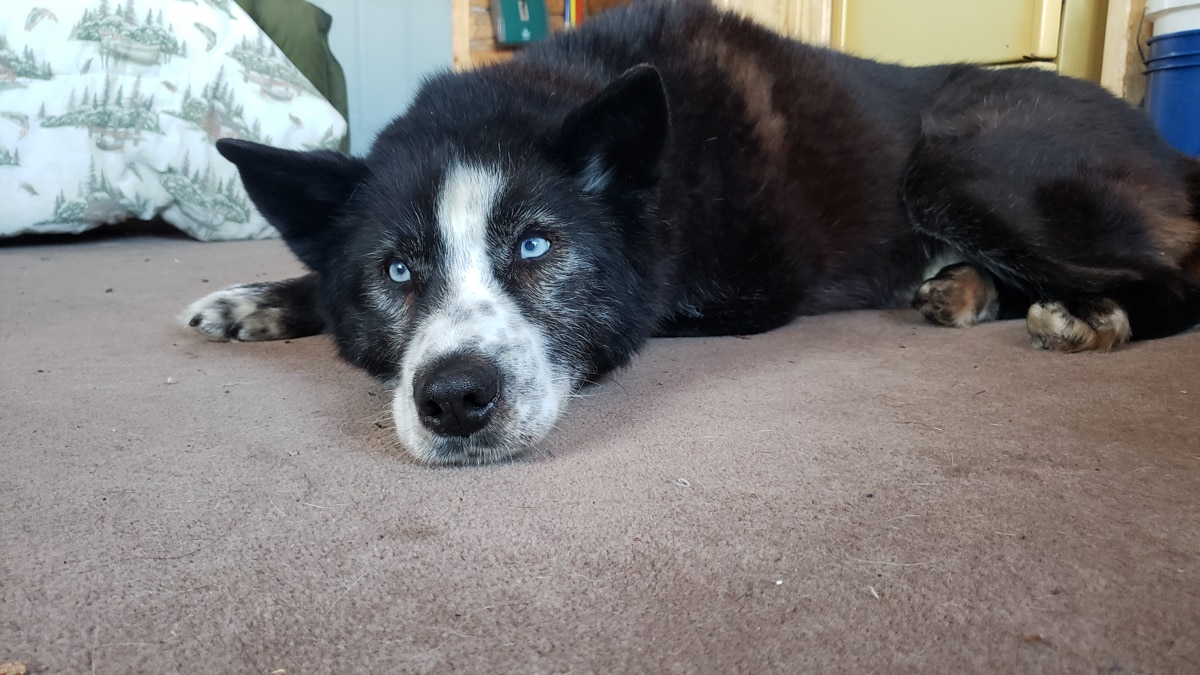
They have a rotation of dogs in their cabin. The oldies are always inside and then 5 or 6 dogs that come into their home every day/night. This way they can potty train them, and also work on indoor cues and training. The focused attention inside really translates to on-trail as they look to humans for ‘what’s next’ and want to please you. Every dog of theirs get one-on-one time; and that’s no small feat when you have 30 dogs!
Sled Dog Puppies
They breed puppies every 4 years, and as luck would have it – 2021 was a breeding year! When we arrived, the 5 new puppies were 5 weeks old and about 22 lbs! Courtney and Brian create a gap in between litters and have a diversity of age so that the dogs aren’t all retiring at once.
In addition, the puppies learn from the older dogs. There’s a lot of wisdom from keeping the old dogs, they essentially teach the young ones.
“For example, Odo is 12 years old and the puppies come in and learn from Odo. We can train them, but Brian and I aren’t dogs. Laughs. As much as I think I’m a dog at times…it just doesn’t work,” laughs Courtney.
We were even put to work with the puppies taking part in their socialization. Just like the kittens I foster, puppies have a window of socialization as soon as they are aware of people and it extends to 16 weeks where they really need to be exposed to various different people so that they will grow up being friendly to humans. Since COVID has limited the number of visitors the kennel normally gets, we had to roll up our sleeves and go to work playing with the puppies. It was a sacrifice…but someone has to do it!
2 Day Dog Sledding Expedition Denali National Park – Let’s Mush!
My adrenaline is racing, heightened by the excitement of the dogs who are so eager to start mushing. Courtney and Brian harnessed up the teams in what appeared to be mass chaos from my point of view, but they had it all under control.
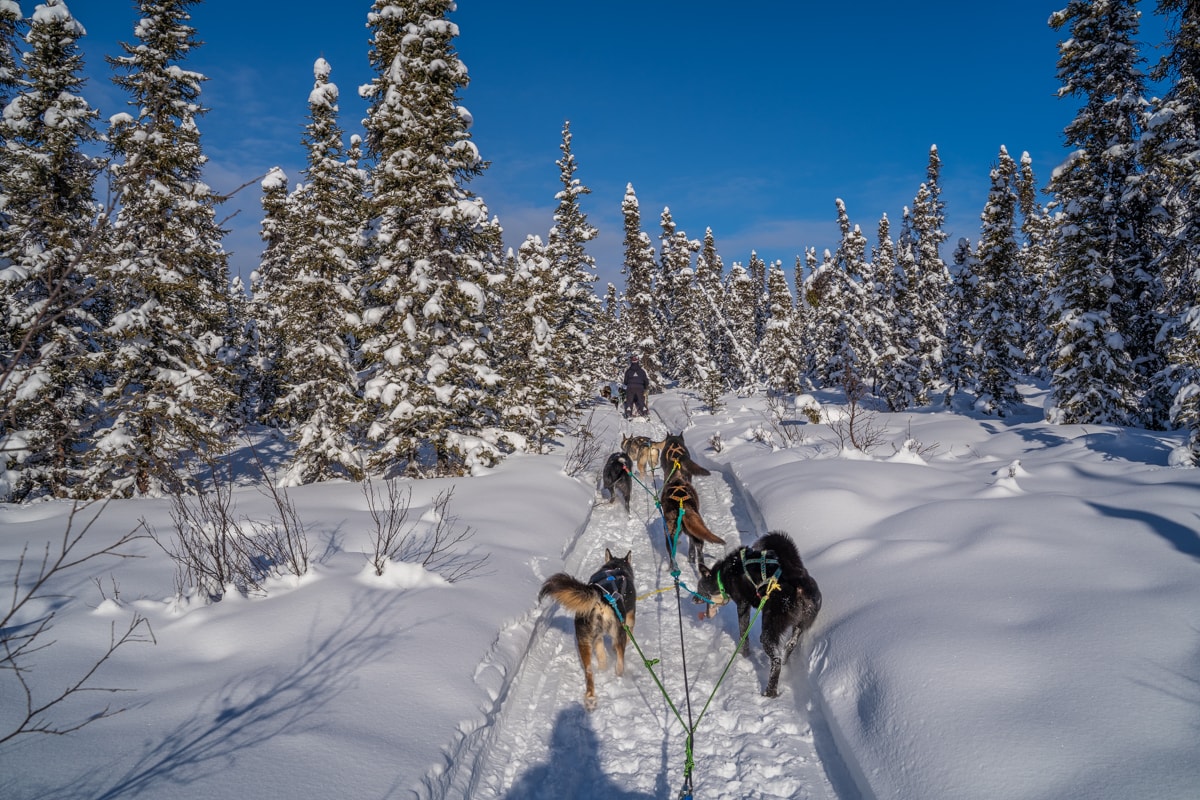
We each had 6 dogs on our team, I was a bit intimidated since I had only worked with a 3 dog team before. This would be more of a challenge, yet I was also brimming with excitement at the same time. This was my sister’s first-time mushing – but she’s no stranger to outdoor winter sports like this.
Brian explained to us that when we initially take off the dogs will be very excited and run fast – upwards of 12 to 15 mph, but once they blow off that energy – they settle into 8mph. They ran through all of the braking and anchoring again. And of course – the most important thing – never let go of the sled!
I was standing on the ‘brake’( a simple metal bar that grips into the ground) as I pulled the first anchor out of the ground and tucked it in the sled. Then I pulled the second anchor and I felt a little jolt forward. My body weight on the brake could barely hold them from taking off. I took a big breath, and moved my feet from the brake to the sled rails and held on. We took off like a drag racing car at the start line but instead of all of the noise of screeching tires, it suddenly became silent. No more barking, or howling – just beautiful silence.
Of course I broke that silence with a scream of joy as we started the journey!
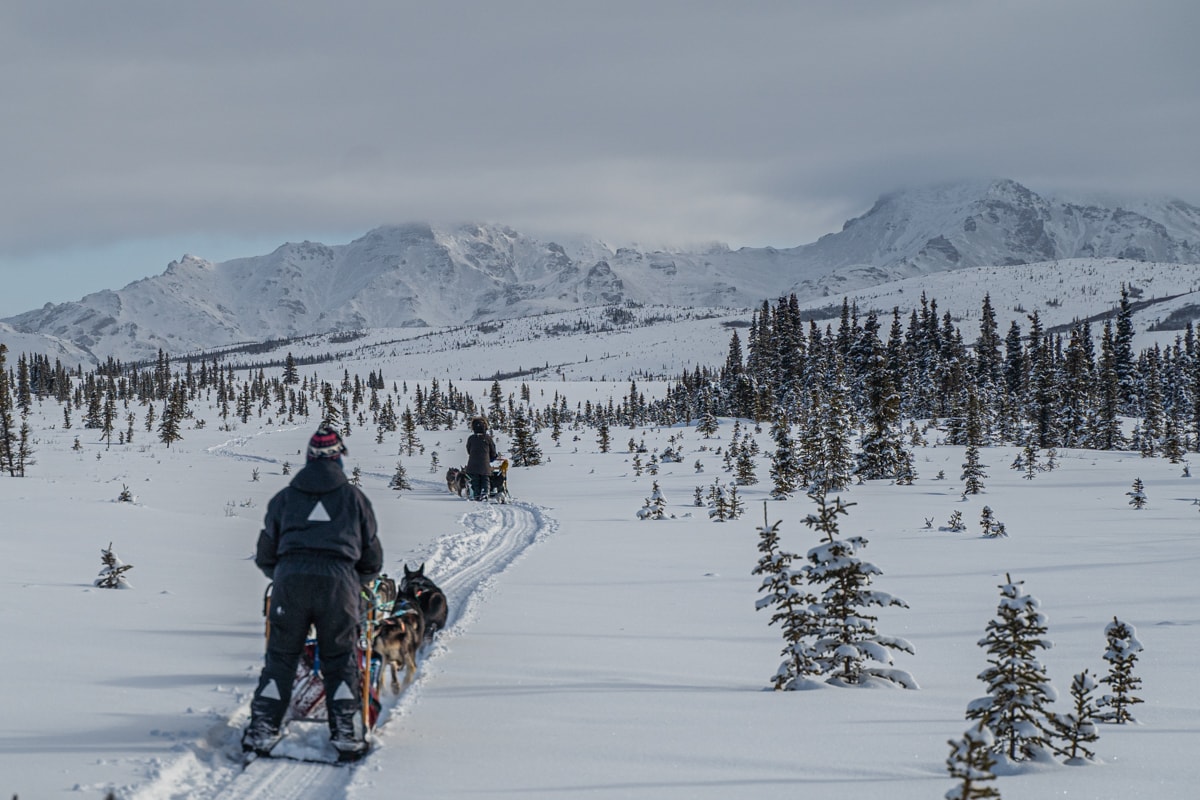
I felt a bit ‘tippy’ and I tried to shift my weight on the sled, remembering from my mushing school how important it is to use your weight to control your sled. After a bit I started getting the hang of going around corners and keeping the sled in the packed part of the trail. But most of all, I just held on and had a huge, happy grin on my face as we glided through the boreal forest!
It’s All Fun Until the Uphills
Courtney stopped ahead of the upcoming hill and reminded us that we may have to get off the sled and run along the side. This seemed like a simple concept in my mind, but I don’t think I had considered what 8mph was like running or that I was wear about 10 extra pounds of gear on me for warmth!
As the dogs started to slow down up the hill, I kicked one leg as if I were on a skateboard – trying to give the dogs a helping hand. But as the sled slowed down even more, I followed Courtney’s advice and hopped off to the side and started to run…or tried to run. With the sled losing a large amount of weight, the dogs seemed to take off and I was trying to hold on without falling down. I was able to run about 4 steps before I had to hop back on, else I would’ve lost the sled!
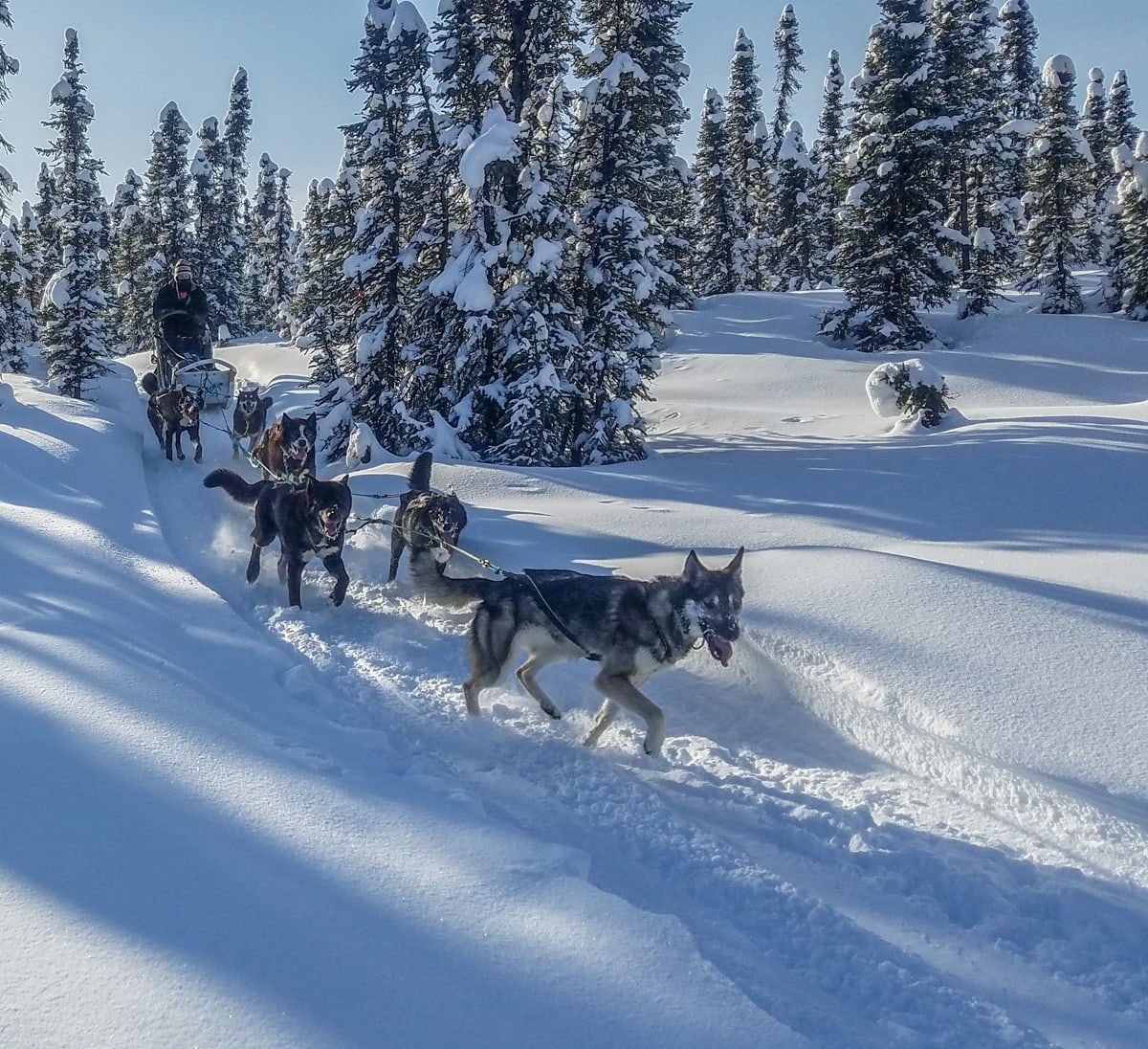
This continued on and off up the hill and by the top I was panting uncontrollably and sweating underneath all of my layers!
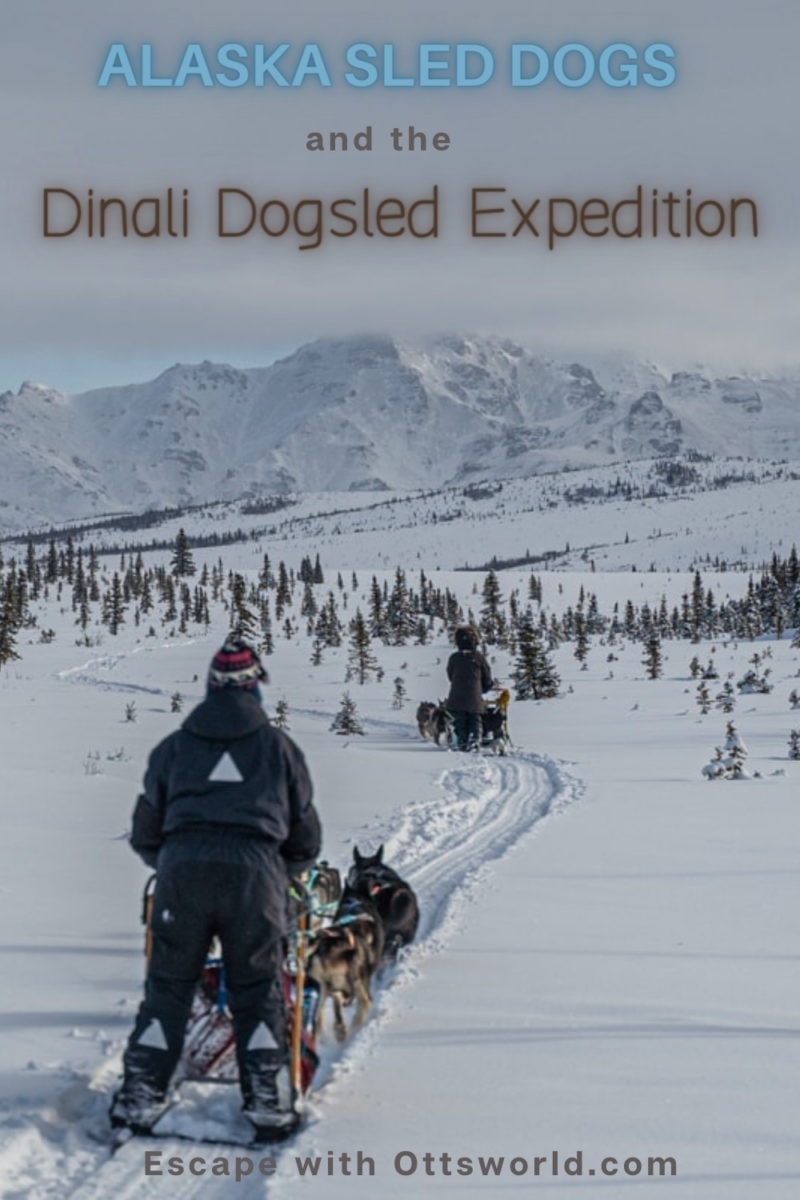
Slate Lake Cabin – The Perfect Backcountry Cabin
We had a hard left onto the lake, and went around the perimeter with a beautiful view of the mountains, and the cabin where we were stopping for the night. All I could think about was how great this sunny, picture perfect day was – dogsledding is the absolute best way to see Alaska. We went for about 8 miles that first day. I was on an adrenaline high – as were the dogs – as we took the harnesses off the dogs and let them run around a bit.
The cabin was small, but had everything you’d need. No power or plumbing – but that’s Alaska – ‘dry cabins’ are the norm here. The view out on the lake was spectacular and Courtney quickly gave us warm mugs of tomato soup and bread for dipping.
Dogs on Rotation
To top off this great experience, our 20 Alaska sled dogs in our expedition were all able to come in the cabin and stay with us! Courtney rotated them in 6 at a time and everyone got a chance inside. The Moon Dog Kennel dogs were so loving, they slept with us and entertained us throughout the night!
After feed the dogs 20 lbs of meat (a beef/tripe), and kibble mix – Courtney fed us a delicious chicken marsala. The sun dropped behind the mountains and the skies turned pink – it was a stunning setting as we sat toasty warm in the cabin cuddling with dogs.
How Does a Perfect Day Get Even Better? Aurora Viewing
We had a perfect blue-sky day, that turned into a clear sky night – and that means one thing – good aurora viewing. With no light pollution in the backcountry, Mother Nature put on a spectacular show. This was the best night of aurora viewing I’ve ever had – the lights danced around – and even spread all the way across the sky like a rainbow overhead. There was not a soul around…and there was only the light of our little cabin on the frozen lake which provided a picture perfect setting.
This was the first time my sister had seen the lights. Every time we were going to go in and warm up, it would seem to fire up again stronger. It swirled above the cabin and across the entire lake. You could even see red spikes. We were literally screaming and dancing out on the frozen lake…we didn’t even notice that it was -15 outside and we had been out there for well over an hour!
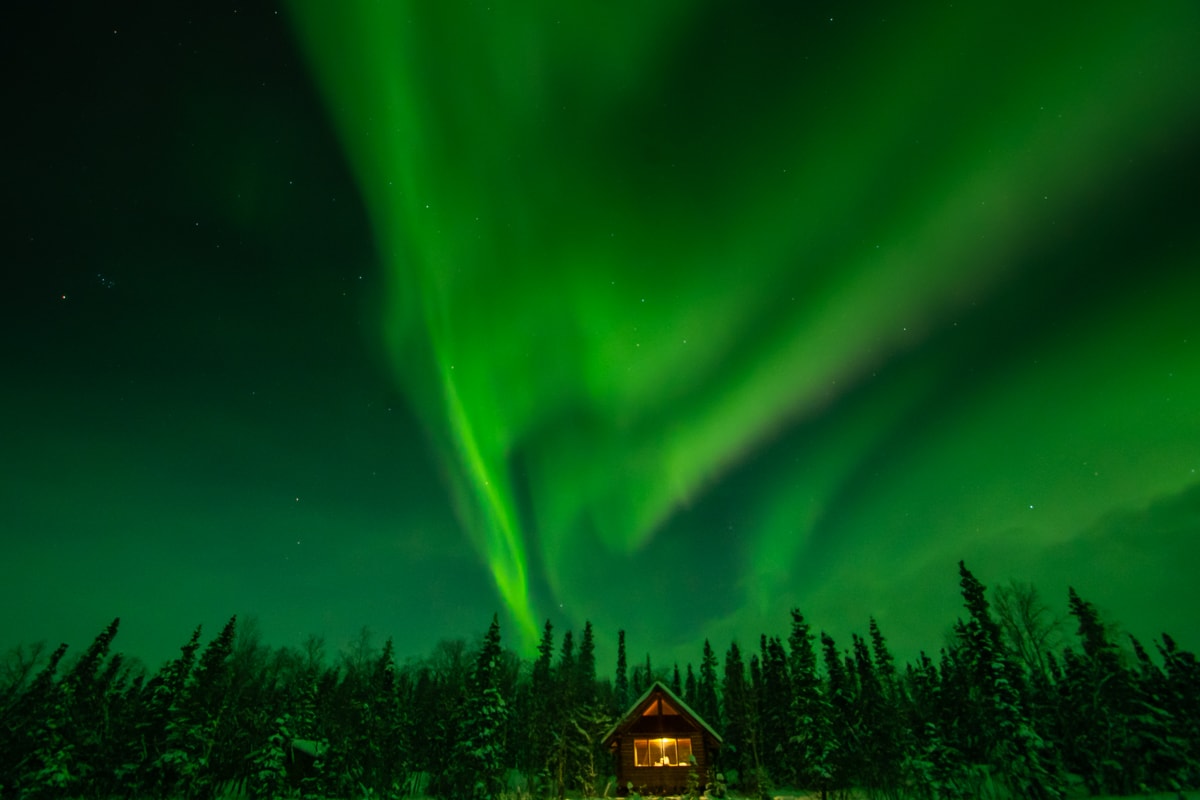
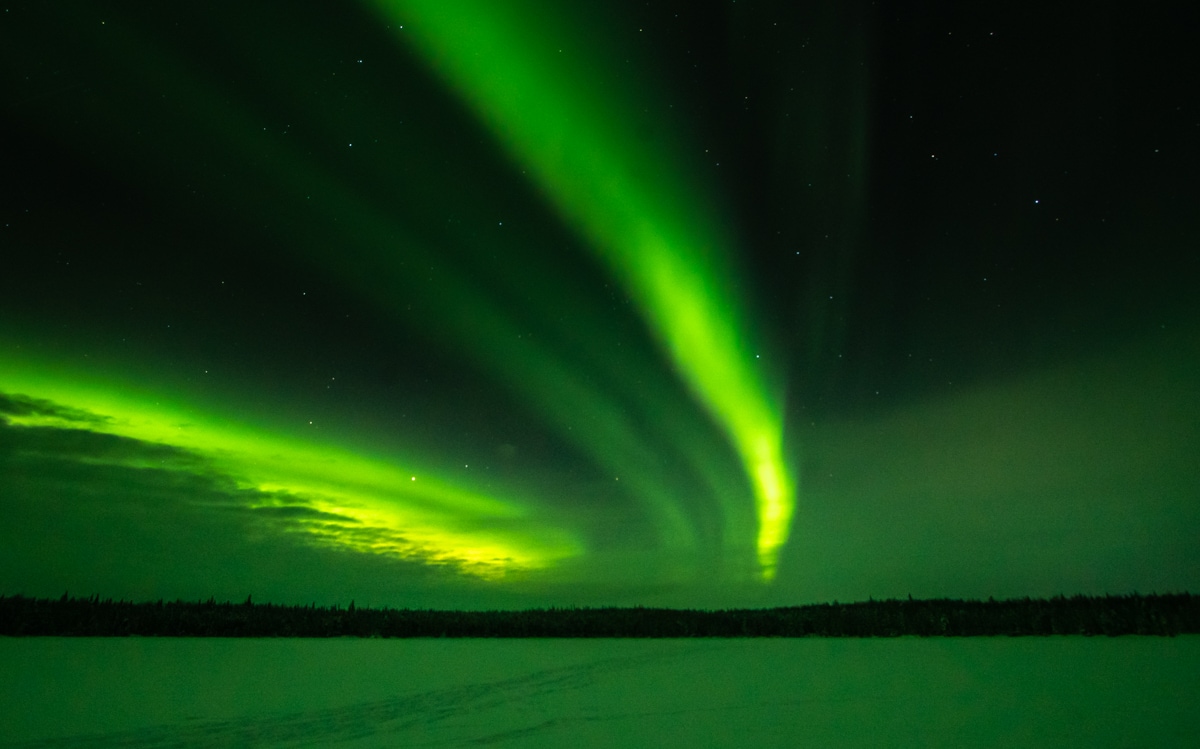
Harnessing and Getting to Know My Team
After a lovely night’s sleep and waking up with cuddly dogs, we took our time, fed the dogs, and got packed up. The 2nd day I would have much more time with my team since we were planning on going 30 miles!
This extra time (and the time indoors the night before) made it possible to get to know each of the 6 dogs better. My lead dog Basil was a skinny dog who liked to dole out kisses. She was so excited to get harnesses up she would literally jump up in the air willing us to go. She honestly could not get enough of running. The funny thing is that she had this weird sideways run. It’s a bit painful to watch – but it works for her!
I also had Cisco, a big husky dog paired with Sela, a little dog with a ton of spunk. Next was Starbuck – my old man who was 13 years old. Most kennels don’t run 13 year old dogs, but Courtney explained it’s worth it to have that wisdom and experience out on trail, even if we have to go a bit slower. Some of the older dogs don’t pull much, but they still love to go – so we hook them up and let them run. After all, when I’m 90 years old I want to do what I love – so that’s our standpoint on it. Starbuck agreed.
Finally, I had Kiviuq who was an incessant barker with beautiful blue eyes. I called him my ADD dog – yet once we got on the trail – he never let out a peep! And finally, I had little Naomi who was a quite timid – I absolutely fell in love with her. I called her Naomi Campbell Snaggletooth because she had this funny little smile since she had lost lots of her teeth. I sort of felt sorry for her next to loud Kiviuq, but she held her own when we started mushing.
My team was yelping and jumping to go; the air was flooded with so much noise and excitement. Then suddenly it all stopped and there was silence. I could just hear the sled gliding through the snow – it was magical.
Teamwork is Dreamwork
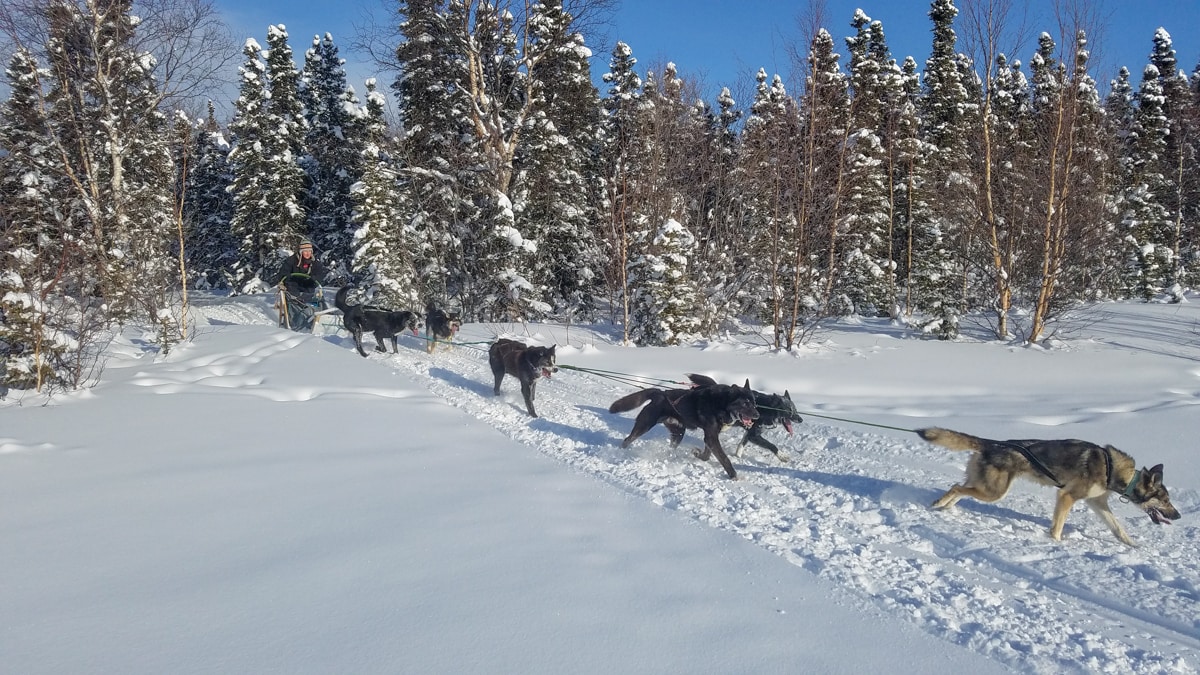
I liked to talk to my team, calling each of their names individually…giving them a bit of encouragement, as well as letting them know when I see slack in the rope. It seemed as if they heard their names and would perk up a bit…or maybe that was just my imagination. Regardless – it felt good to talk to them – it really felt like we were a team. And that’s what mushing is all about – teamwork between animals and humans.
How Alaska Sled Dogs Stay Warm
It was much colder and a little overcast the second day. Icicles hung from the dog’s fur. You might wonder how the dogs stay warm; Alaskan Huskies are cold weather mutts, they have the mix of the best traits to sustain themselves in the cold in interior Alaska. They are a specific breed equipped with the best things to sustain in the cold. Alaska sled dogs have counter current circulation so they always have warm blood going to their extremities. They are just like northern wolves and can sustain in the cold weather.

In addition – overnight if it gets REALLY cold they dig a nest in the snow curl up in it like a snail! Courtney told me that if you take a thermometer and stick it in the middle of the ‘curl up’ it’s about 70F!
In addition, as they run, they actually get incredibly hot (as I did when I tried to run up the hill!) They cool off by brushing against the snow in the deep tunnel/path they’ve carved. It’s called ‘snow bathing’. Also, every time we stopped they immediately launched themselves into the snow and rolled around! Courtney explained that they run the best when it is between 20 and 30 below.
How did I stay Warm?
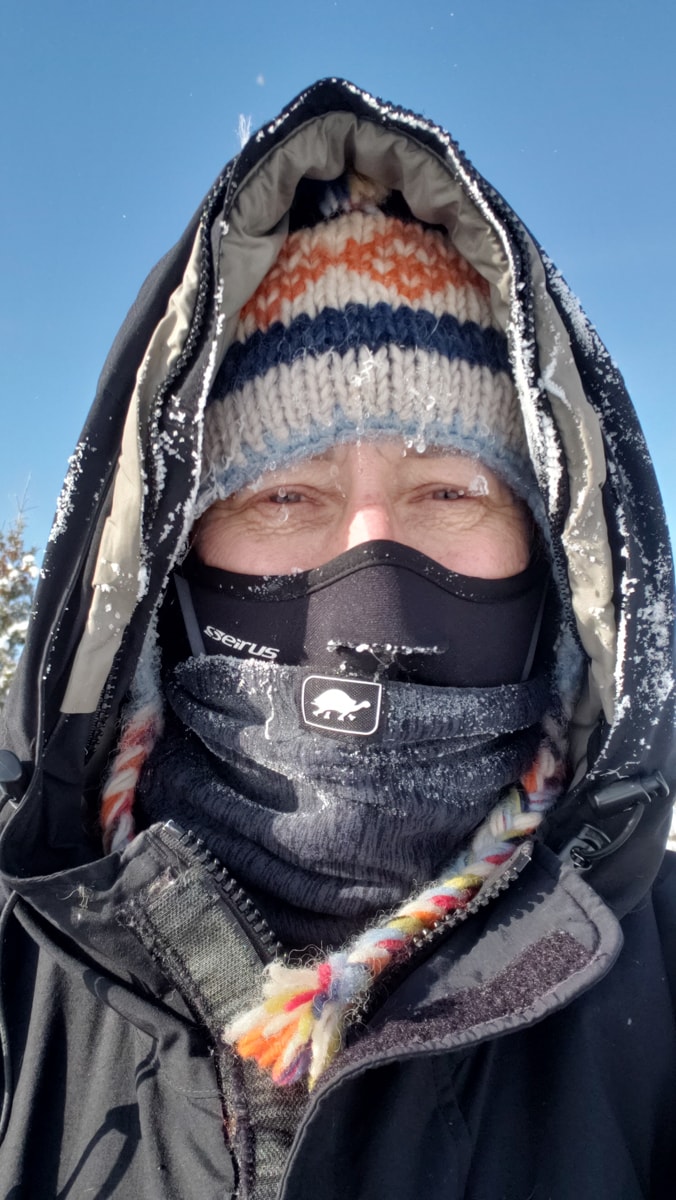
Well – I did consider flopping in the snow when I was overheated running up the hill – but besides that I was actually just right – toasty warm! I had my base layers and then Earthsong Lodge outfits you for mushing. We had incredibly warm boots, a whole winter jumpsuit, and huge mittens. They also provided hand and glove warmers. The only time I got chilly was the 2nd day because we were going so fast that the little part of my face was exposed to the wind!
I asked Courtney what she would tell someone considering coming to Alaska for a winter vacation.
“Don’t be afraid of the cold. Find and invest in good gear, don’t skimp. If you buy the $10 gloves because they say they are rated for -70…be skeptical. Invest in good base layers and the outfitters will have everything else. We don’t want you to come here and be miserable! We’ll make sure you have fun!”
A Dog Sled Expedition that Exceeded All Expectations
This was one of the best adventure experiences I’ve been on all around the world. Meeting Courtney and Brian and seeing their love of the dogs, the thrill of trying something new and pushing myself, the loving dogs, the aurora, the remoteness of it all – I was in travel heaven.
Not only do you leave with dogsledding skills, but Courtney mentioned that you leave with more confidence around dogs in general. “We get a lot of people who are afraid of dogs,” she said, “and we have big 85 lb dogs. But they are so sweet. Every person has left with more confidence around dogs. Socializing these dogs from a young age is the most important thing you can do.”
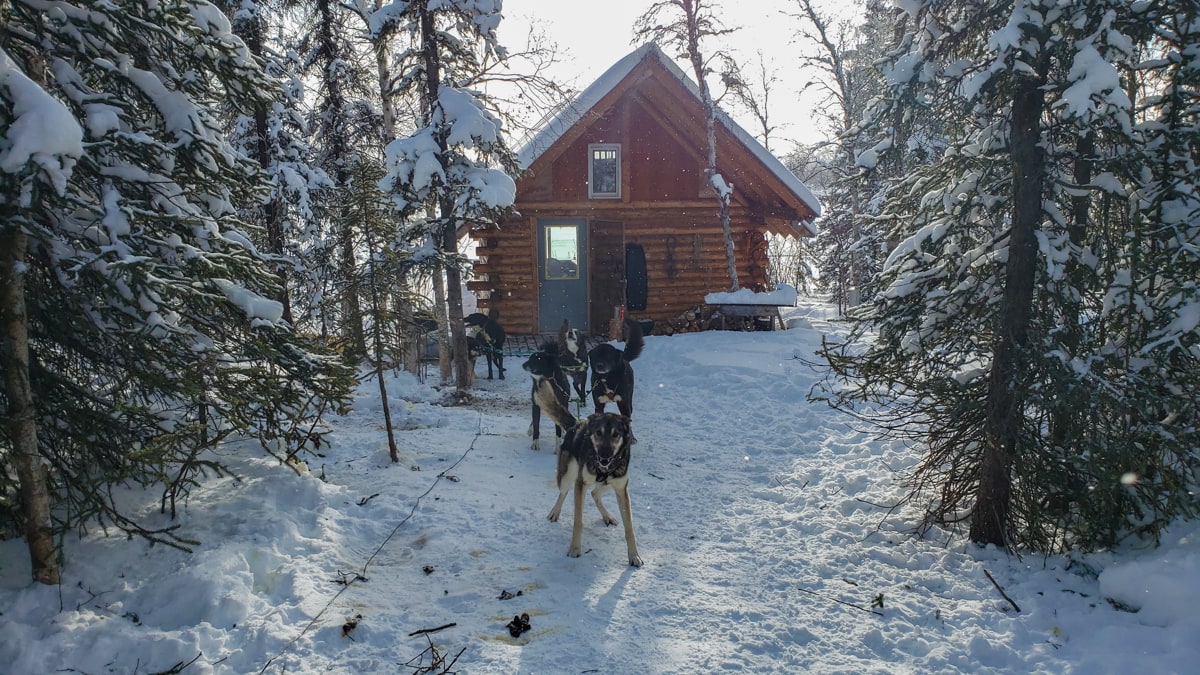
I am normally one of those people – a bit apprehensive around big dogs, but I can safely say that as a tourist coming to mush, these dogs love people, they are calm, and they love to be pet.
The Perfect Way to Experience Alaska in the Winter
I’ve always believed that the beauty of Alaska is the backcountry. In fact, I will go as far as saying if you haven’t experienced the Alaska backcountry, then you haven’t experienced Alaska. And there’s no better way to experience the Alaska backcountry in the winter than dogsledding and getting to know these incredible Alaska sled dogs.
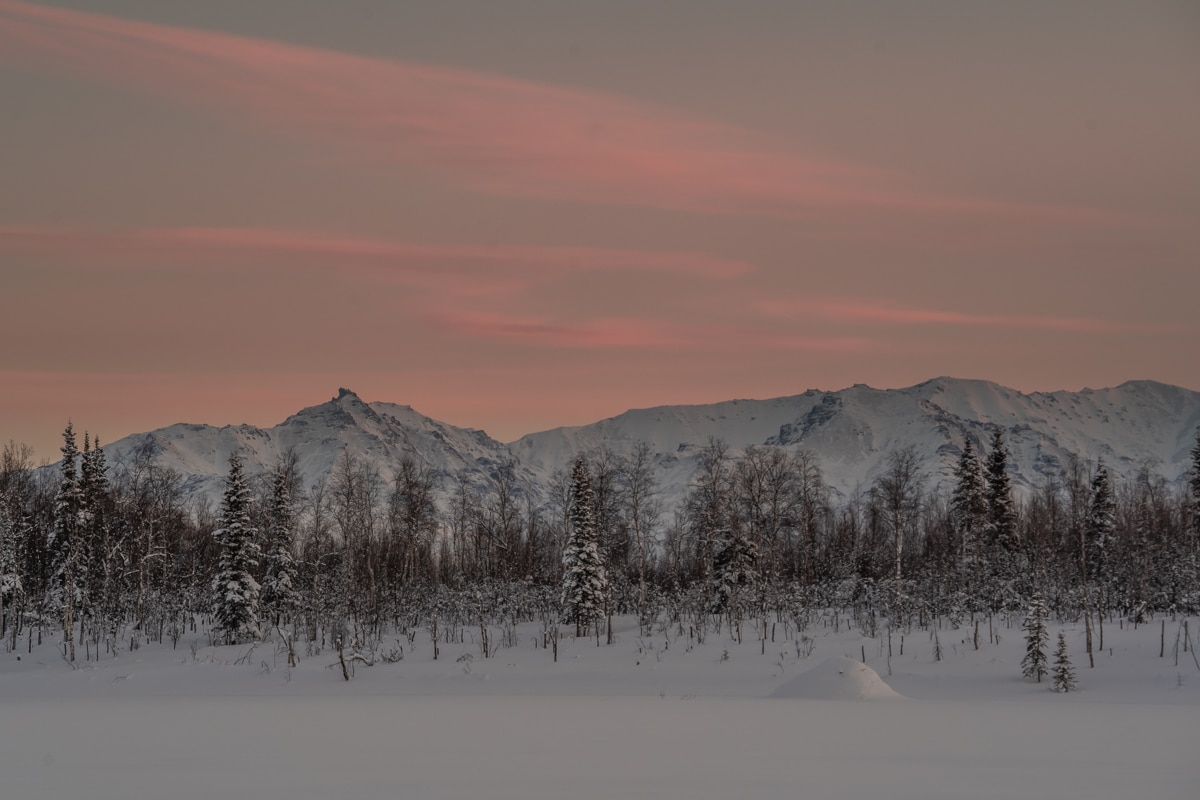
I loved these last thoughts from Courtney,
“For the general population it’s easy to get stuck in your same routines and habits – surrounded by electronics. Remote Alaska is a way for you to truly disconnect. I feel like you don’t really know yourself unless you give yourself time to be in places like this where all that you have is your inner dialog. It’s easy to shut off your inner dialog when you are surrounded by electronics, work, kids, school – but when you are out here you can’t shut it off. Once you step off the runners that’s it, you’ve done what you need to do for the day, and you are left with yourself. A lot of people go their whole lives and don’t experience themselves. That can be scary. Most people never see this (motioning to the remote Slate Lake) or see themselves.”
And finally, be prepared to get a lot of dog kisses on this trip.
Related
Disclosure:
I was a guest of Travel Alaska on this trip. However all opinions expressed here are my own.
There has never been a better time to plan your next trip and make your Dream vacation a reality . Whether you've been dreaming of relaxing on a sun-kissed beach, exploring ancient cities, or embarking on an epic adventure, now is the perfect moment to make it happen.


